A couple of days into the latest national lockdown and 2021, Derbyshire Police, handed Jessica Allen and Eliza Moore £200 penalty notices for alleged breaches of lockdown rules while on a walk at a remote spot around five miles from their homes in Leicestershire. The fixed penalty notices were issued after the two friends were told their hot drinks were in breach of the laws as they were “classed as a picnic”.
During the 2nd week of 2021, Boris Johnson, the Prime Minister, came under pressure to clarify details of a Sunday bike ride seven miles from his Downing Street residence after No 10 refused to say whether he was driven there. Parkgoers spotted Johnson cycling in the Queen Elizabeth Olympic Park in Stratford, east London, along with his security detail, at about 2pm on Sunday 10 January.
COVID-19 guidance, in England, states ‘you should not travel outside your local area’ and during a national radio interview later that week, Metropolitan Police Chief, Cressida Dick, helpfully clarifies these guidelines by saying, “Local means local”. The same regulations also tell us we are allowed ‘essential travel’ from our homes for one session of exercise. (There is no time limit applied to this essential exercise). The rules, needless to say, vary across the UK and are different in Scotland, Wales and Northern Ireland.
The Derbyshire Police, it should be noted, have previous on this. Like using drones to track (or perhaps more appropriately stalk) walkers who are in remote parts of the countryside, with no one to socially distance from, in an attempt to pour shame on a practice that should be encouraged. More recently they adopted the tactics of ridicule to deter ‘stupid hikers’. It also worth remembering that while the rest of the UK has been bouncing in and out of various tiers and levels of lockdown many people in the north and midlands have been under stricter regimes for months.
But just what is ‘local’ in London? I’m lucky to have Richmond Park a kilometre from my doorstep. (I know this for a fact because my phone tells me this when I go for my daily run and enter the park at Ham Gate.) If I walk from my front door to the park, then round the periphery and return home, that 13 kilometre-ish walk would have me visiting 3 London boroughs – Kingston, Richmond and Wandsworth. I’m also about half a mile from the Thames Path and in 30 minutes I can cross from south of the river to the north bank. Long a physical, cultural and philosophical divide for so many Londoners. Is it better for me to take a short bus ride to somewhere like Feltham and avoid adding to the number of users in the Royal Parks or on the Thames Path by walking across the much less used London Air Park on my way back home?
At the same time there is abundant evidence that despite the marvellously hopeful news of several successful vaccines showing us a potential path out of the pandemic, that many people are finding this iteration of lockdown tougher to bear. As a collective we seem to have gone through various phases of lockdown. As Simon Armitage, the Poet Laureate, “At first, people associated it with the weather and being outside, so although there were restrictions, there were also compensations. I probably started to feel it most keenly recently, as it got darker and colder and the days got shorter.”
Speaking personally, there were times during last summer when you might have mistaken my local park for some sort of idealised Victorian sanatorium, filled with joggers, skippers, stretchers and barbell-raisers. On the deserted roads nearby, families cycled in liberated unruly gaggles. People were gazing admiringly at magnificent street trees that they usually ignored as they scuttled to the station or bus stop as part of their daily commute. Inside living rooms, children started the day by doing star-jumps with their parents. It felt like a new start. It was, of course, one huge mirage. Subsequent research by Sport England found that overall activity levels fell dramatically for both adults and children. During the pandemic, an ongoing crisis became even worse.

And activity levels were frighteningly low beforehand. Even in normal times, about four in 10 British adults are so immobile they risk their long-term health. Around 25% are almost completely inactive, meaning they exert themselves for less than 30 minutes a week. It is suggested that we do 150 minutes of exercise a week. Judging by the number of books published telling us how good exercise is for us, how to do it better and cheaper and how to have more fun doing it, more Britons are buying and reading these books than actually doing any exercise. Great though the various apps (and yes there are so many to choose from) that take us from the couch to 5k are, what we really need is a couch to front door approach.
You don’t have to be a COVID_19 denier nor a lockdown sceptic to be concerned about the long-term effects of any recovery of the nations as we journey to a new normal. Lockdowns are undeniably successful at reducing that dreaded ‘R’ number and crushing the virus. Trouble is they are also wonderful at choking the life out of the economy at the same time as exacerbating the various other social epidemics that were afflicting in the before times.
walking class hero lockdown days playlist :
The Tracks of my Tiers

Diana Krall – California Dreamin’
Aretha Franklin – Tracks of my Tears
Bruce Springsteen – Stayin’ Alive
For What It’s Worth – The Staple Singers


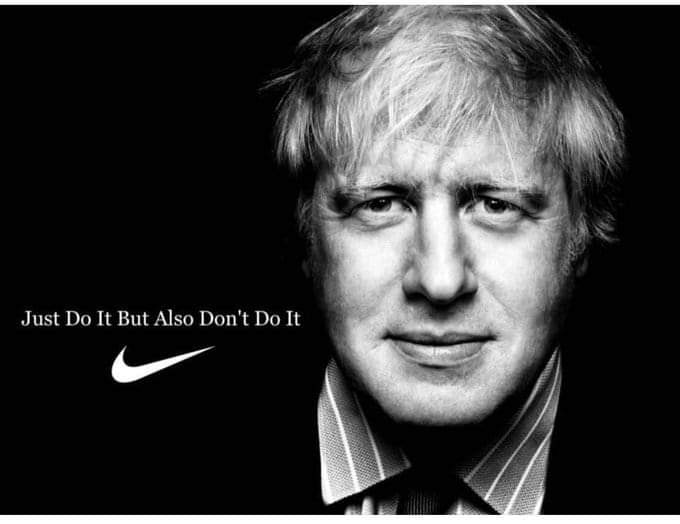





 routes and green spaces, that encourage you to get out and explore London on foot. So far, the network covers all or part of the following boroughs: Camden, City of London, Islington, Kensington and Chelsea, Lambeth, Southwark, Tower Hamlets and Westminster.
routes and green spaces, that encourage you to get out and explore London on foot. So far, the network covers all or part of the following boroughs: Camden, City of London, Islington, Kensington and Chelsea, Lambeth, Southwark, Tower Hamlets and Westminster.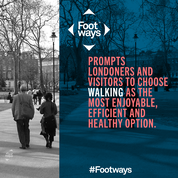

 4 July, and from that date you no longer need to be 2 metres apart unless you can be, in which case don’t be 1 metre apart unless you have to but then be 1 metre plus where ’plus’ isn’t distance but precautions which is the same a s being 2 metres apart which is what you should be unless you
4 July, and from that date you no longer need to be 2 metres apart unless you can be, in which case don’t be 1 metre apart unless you have to but then be 1 metre plus where ’plus’ isn’t distance but precautions which is the same a s being 2 metres apart which is what you should be unless you can’t… Or something like that. And did I mention pubs can re-open on Saturday 4 July. But then again who knows how long that will last given the current U-turn fever of the government, think free school meals during the summer holidays. And within those couple of days this is what Bournemouth beach looked like.
can’t… Or something like that. And did I mention pubs can re-open on Saturday 4 July. But then again who knows how long that will last given the current U-turn fever of the government, think free school meals during the summer holidays. And within those couple of days this is what Bournemouth beach looked like.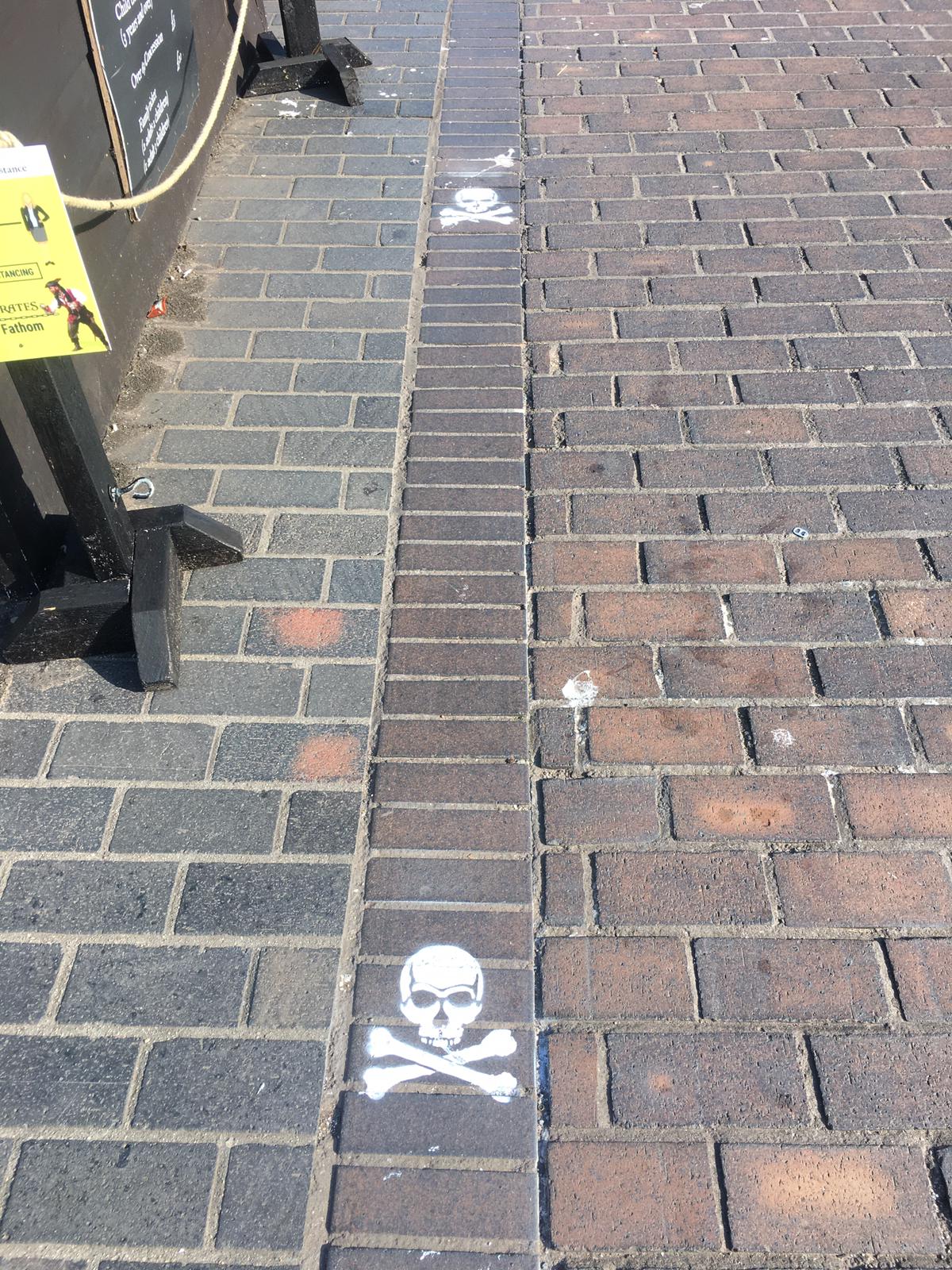 phone and you’ll find the software ready and waiting to go that allows COVID-19 notifications under Bluetooth connections.) So, after mis-managing the health crisis so far meaning thousands of care home residents have unnecessarily died and we still can’t educate our kids, the government is turning its attention to
phone and you’ll find the software ready and waiting to go that allows COVID-19 notifications under Bluetooth connections.) So, after mis-managing the health crisis so far meaning thousands of care home residents have unnecessarily died and we still can’t educate our kids, the government is turning its attention to 

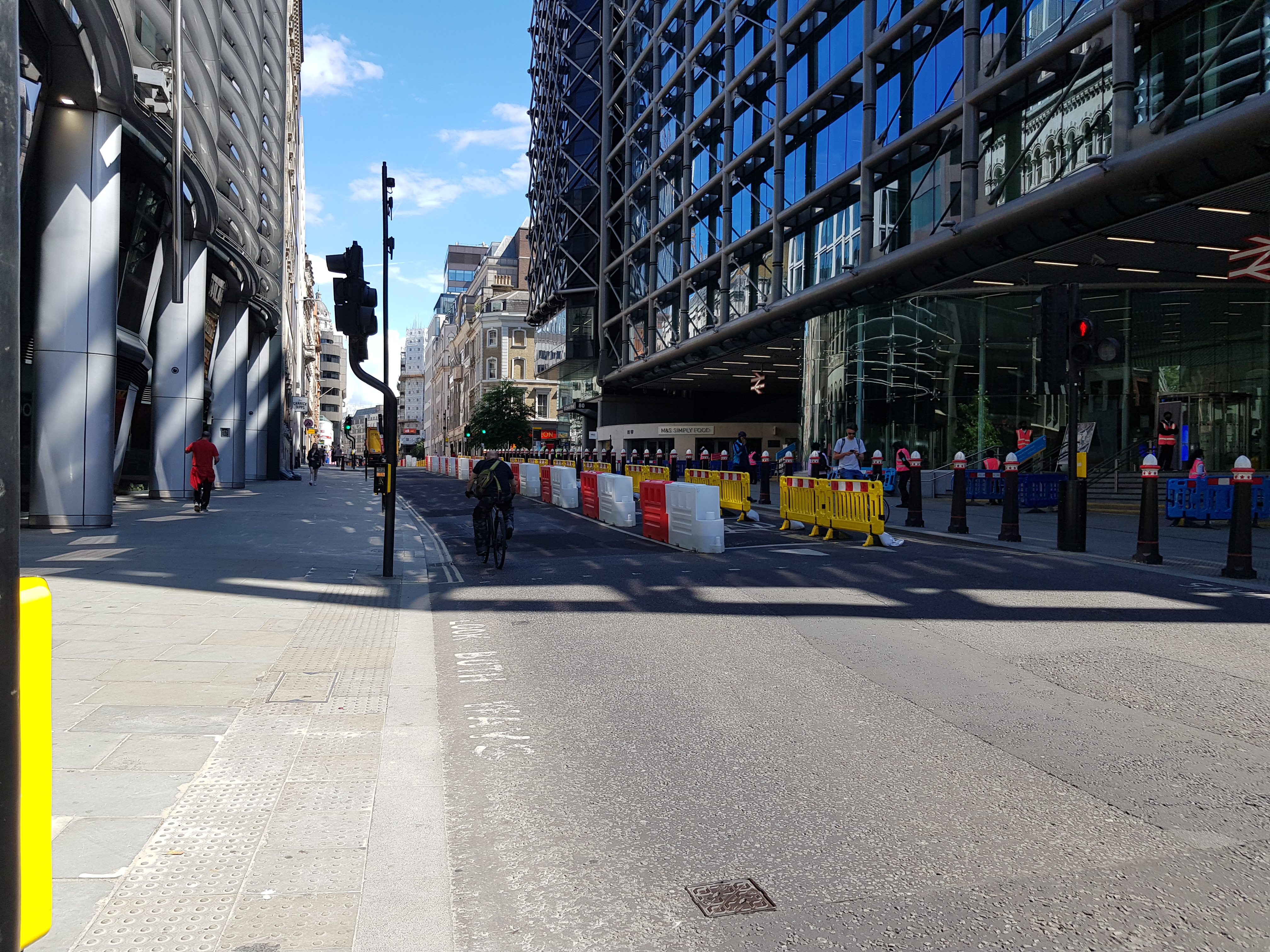 broadly support anyway but it is definitely true to say COVID_19 has achieved in 13 weeks something that may have taken 3 to 5 years to accomplish under our normal incremental approach.
broadly support anyway but it is definitely true to say COVID_19 has achieved in 13 weeks something that may have taken 3 to 5 years to accomplish under our normal incremental approach.  walking are not such strange bedfellows. I also hear rumours that a lot of
walking are not such strange bedfellows. I also hear rumours that a lot of 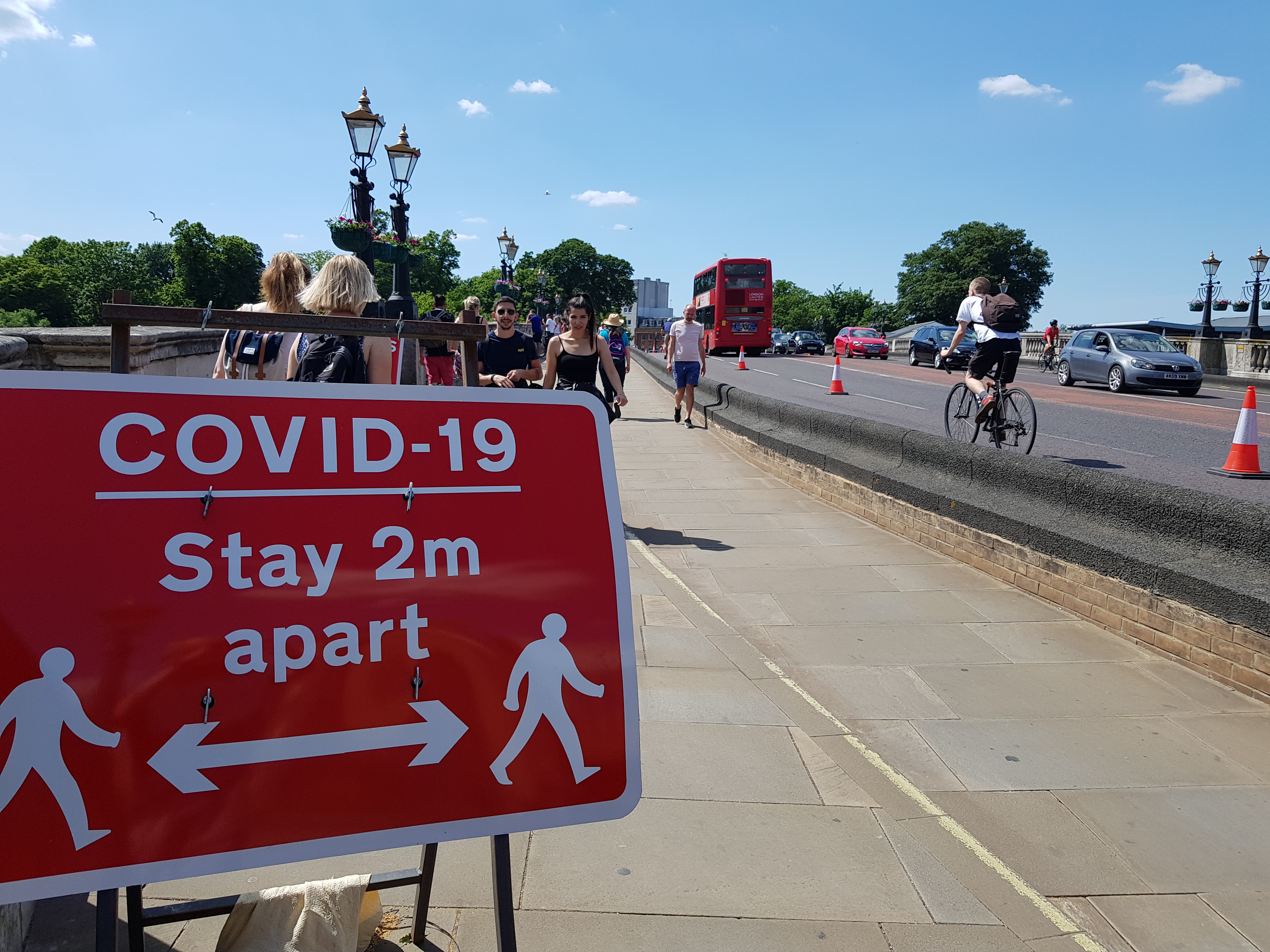 pedestrians and not just those queueing for the shops in many places. They’re beginning to grasp the nettle of their notourious one-way system as well as dedicating significantly more space to walkers and cyclists at the expense of cars on
pedestrians and not just those queueing for the shops in many places. They’re beginning to grasp the nettle of their notourious one-way system as well as dedicating significantly more space to walkers and cyclists at the expense of cars on 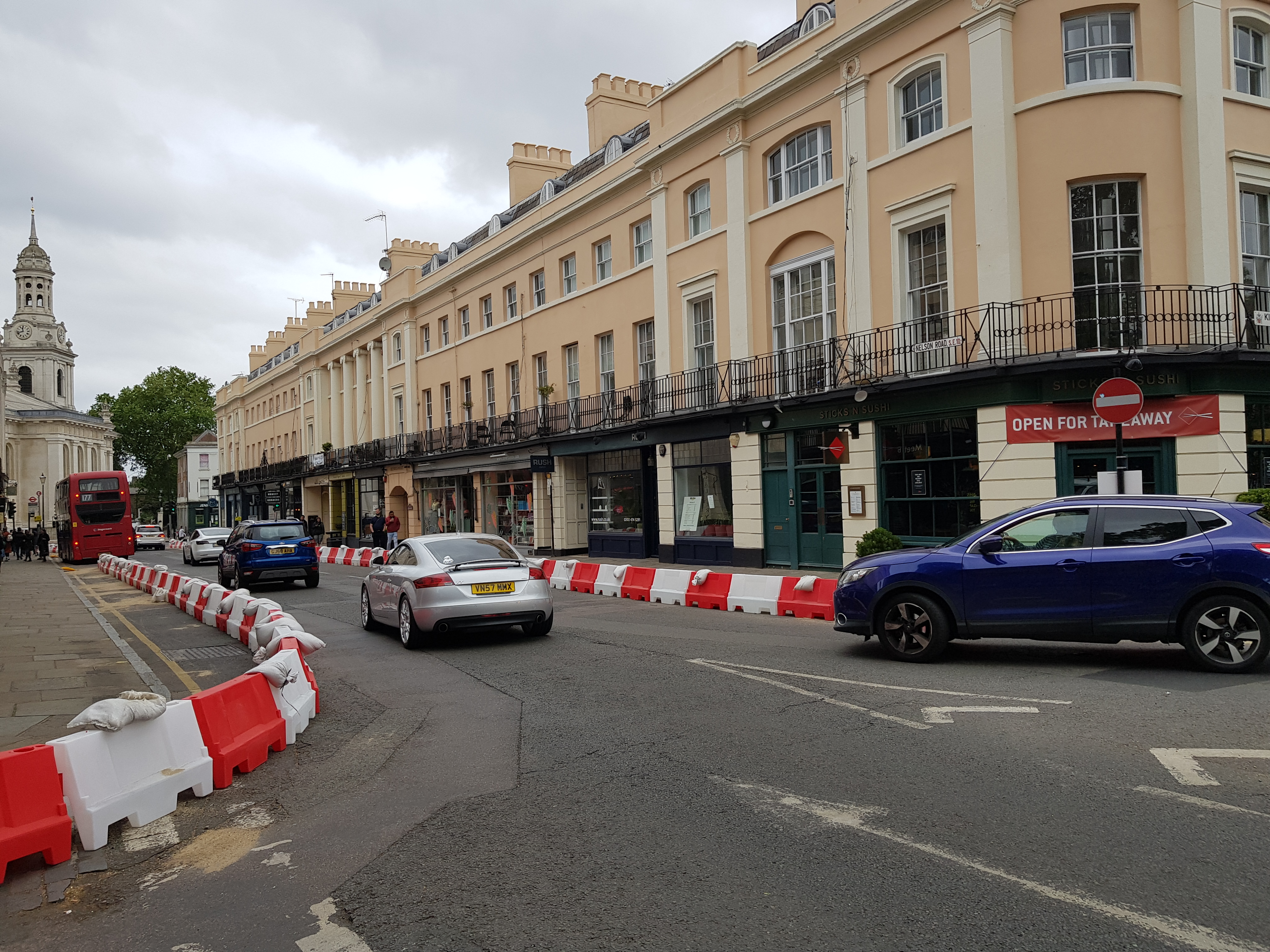 and save the shops and traders there (an admirable and worthwhile desire) they could end up having the opposite effect as walkers don’t know where to cross and cyclists won’t know what lane to take and both groups will probably end up choosing other nearby alternatives to do their local shopping. Simply put, both boroughs know in their heart of hearts these sites ought to become car free and at the same time a safer environment for all users.
and save the shops and traders there (an admirable and worthwhile desire) they could end up having the opposite effect as walkers don’t know where to cross and cyclists won’t know what lane to take and both groups will probably end up choosing other nearby alternatives to do their local shopping. Simply put, both boroughs know in their heart of hearts these sites ought to become car free and at the same time a safer environment for all users.

 continent. In North America it has been found in the Canadian provinces of British Columbia, Manitoba, Ontario, Quebec, Nova Scotia, New Brunswick, Prince Edward Island and Newfoundland. In the United States it is found on both the east and west coast, seemingly restricted to northern latitudes.
continent. In North America it has been found in the Canadian provinces of British Columbia, Manitoba, Ontario, Quebec, Nova Scotia, New Brunswick, Prince Edward Island and Newfoundland. In the United States it is found on both the east and west coast, seemingly restricted to northern latitudes.



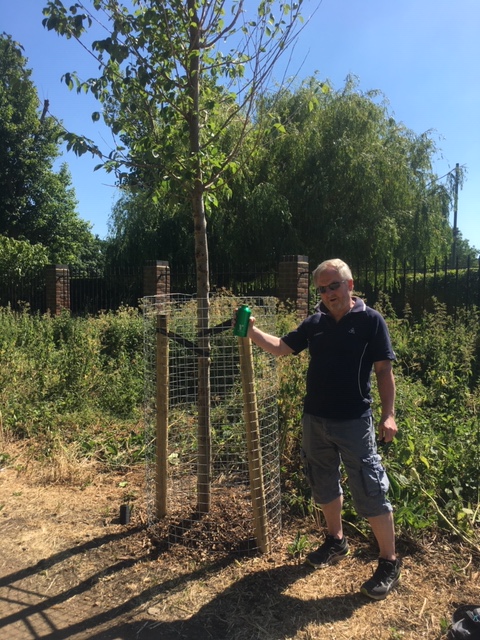


 10% or 15% of its previous commuter traffic as lockdown eases. I realise not all public transport travellers are commuters, and that not all commuters are white collar workers, but now you can probably see that the shortfall in coping with this ‘new normal’ seems more do-able than before. It’s still a monumental task though.
10% or 15% of its previous commuter traffic as lockdown eases. I realise not all public transport travellers are commuters, and that not all commuters are white collar workers, but now you can probably see that the shortfall in coping with this ‘new normal’ seems more do-able than before. It’s still a monumental task though. nowadays as can you even buy a TV that isn’t flat screen ?!) But for me this is also the start point for why most of these schemes break down. If there are similarities, we also have differences and some of these differences are almost insoluble if we continue to couple walking and cycling together in a one size fits all approach. They go at different speeds, different efficiencies, different distances, with different take-ups, different demographics on different infrastructure provision.
nowadays as can you even buy a TV that isn’t flat screen ?!) But for me this is also the start point for why most of these schemes break down. If there are similarities, we also have differences and some of these differences are almost insoluble if we continue to couple walking and cycling together in a one size fits all approach. They go at different speeds, different efficiencies, different distances, with different take-ups, different demographics on different infrastructure provision.


 Furthermore, that on a Thursday they are illuminated blue in support for our key workers across not only in the capital and the UK but also the world. You are never far from a reminder that London is proudly multi-cultural and the exemplar of a world city.
Furthermore, that on a Thursday they are illuminated blue in support for our key workers across not only in the capital and the UK but also the world. You are never far from a reminder that London is proudly multi-cultural and the exemplar of a world city.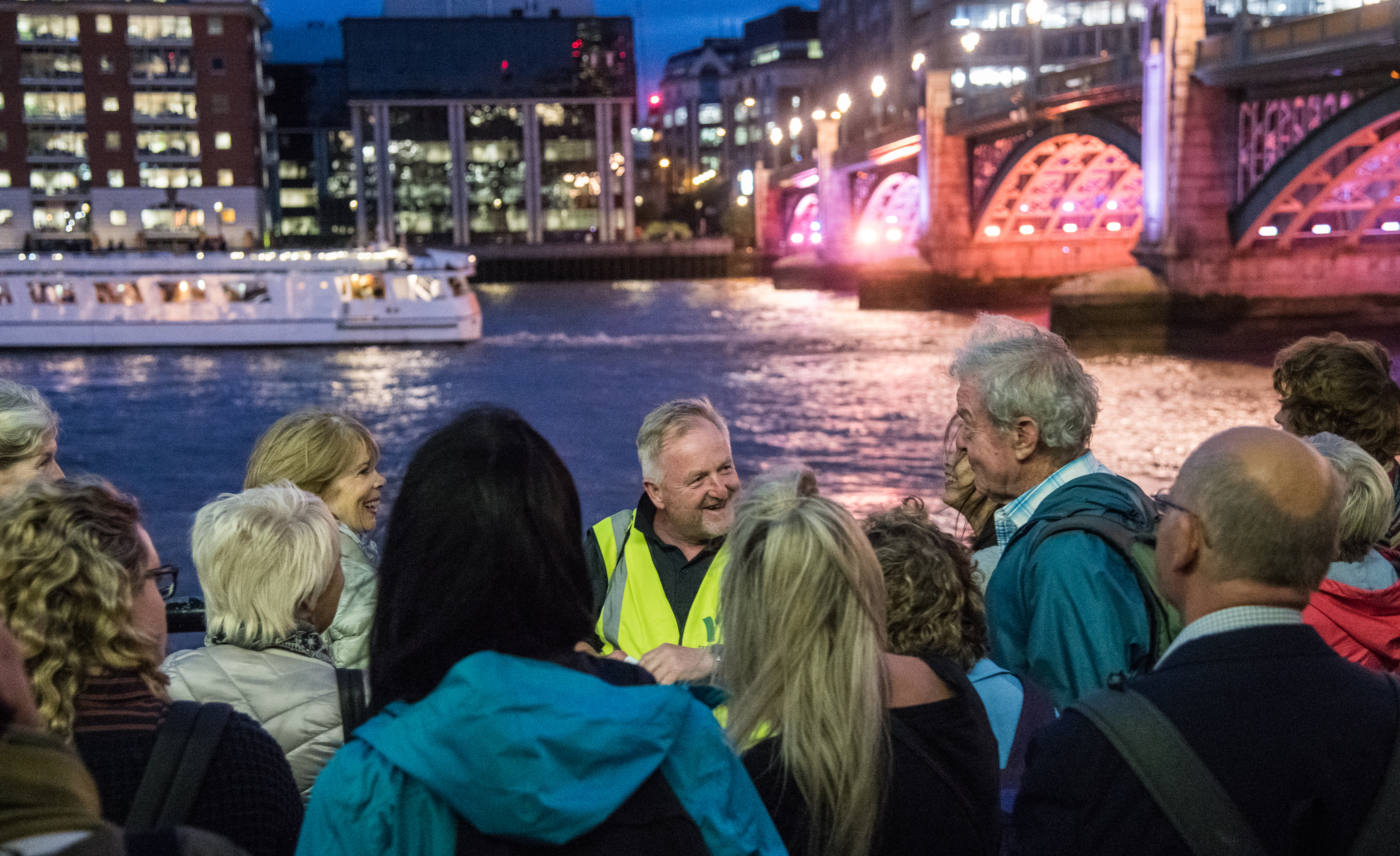 currently lit and discussing future proposals. These free walks were, flatteringly, popular and ‘sold out’ on the day of listing. They were immense fun to lead and in that tradition of learning as well as sharing knowledge I learnt so much about engineering, who can be awarded
currently lit and discussing future proposals. These free walks were, flatteringly, popular and ‘sold out’ on the day of listing. They were immense fun to lead and in that tradition of learning as well as sharing knowledge I learnt so much about engineering, who can be awarded  although I know I’d need binoculars to clearly see them. I look at my watch and realise it’s going to be at least an hour before the sun goes down and that normally I’d be in the nearby
although I know I’d need binoculars to clearly see them. I look at my watch and realise it’s going to be at least an hour before the sun goes down and that normally I’d be in the nearby 

 suggesting they could decline to work with the government during the crisis “unless we see clear repentance, including the sacking of Cummings.” And Daily Mail headlines scream: “What planet are they on?”. And the official
suggesting they could decline to work with the government during the crisis “unless we see clear repentance, including the sacking of Cummings.” And Daily Mail headlines scream: “What planet are they on?”. And the official  comment with moderation, avoiding personal attacks, and would not normally speak in public for their Minister or the Department. His frankly risible explanation of his family trip to
comment with moderation, avoiding personal attacks, and would not normally speak in public for their Minister or the Department. His frankly risible explanation of his family trip to 

 more often than not think of their walks as first walking to a form of public transport, riding to your start point and walking. Even with that mentality I was probably so familiar with the walk down to the
more often than not think of their walks as first walking to a form of public transport, riding to your start point and walking. Even with that mentality I was probably so familiar with the walk down to the 

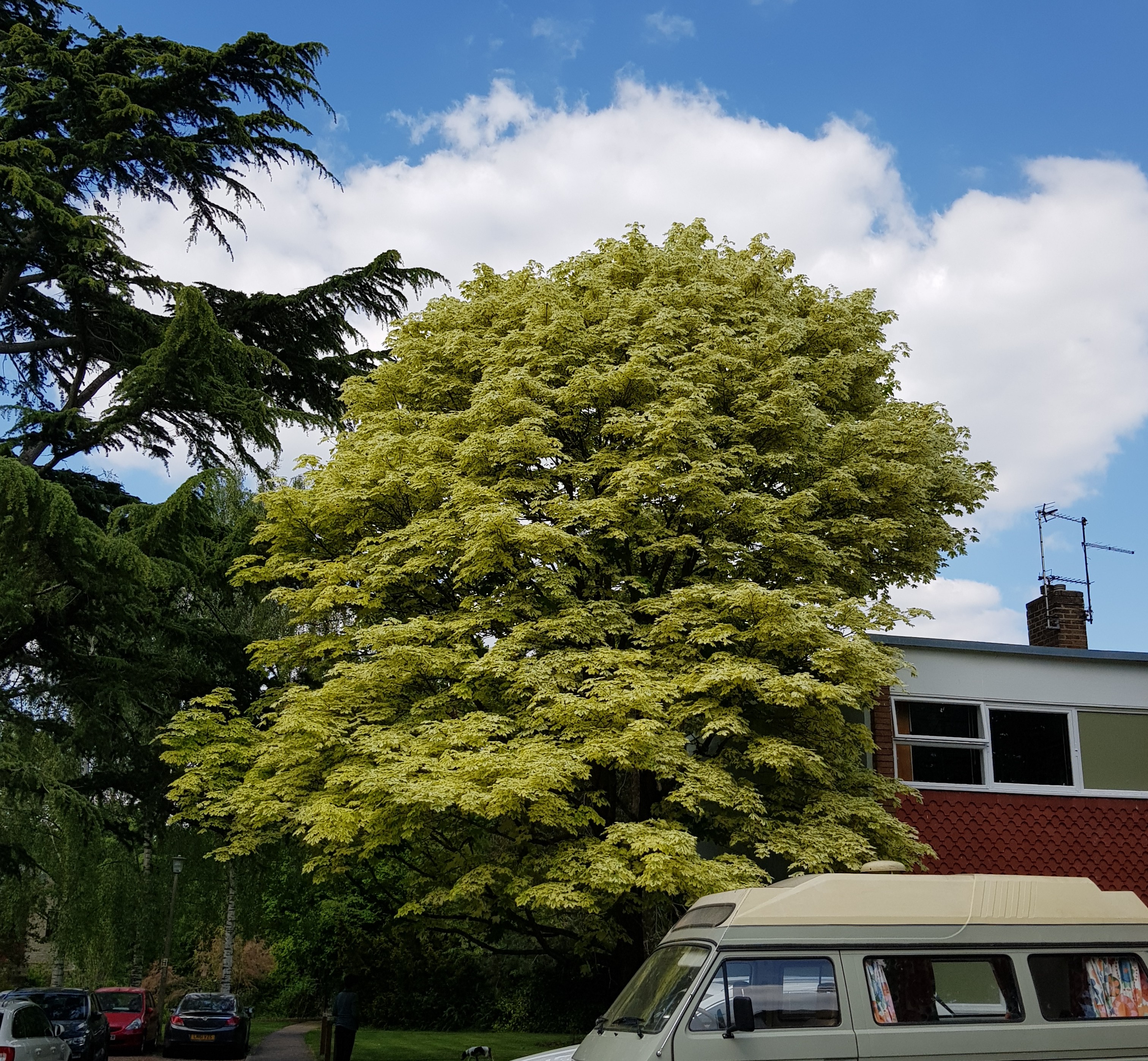 You can enter your postcode and get a walk from your door with the trees of note listed. Me and Clare, aka
You can enter your postcode and get a walk from your door with the trees of note listed. Me and Clare, aka 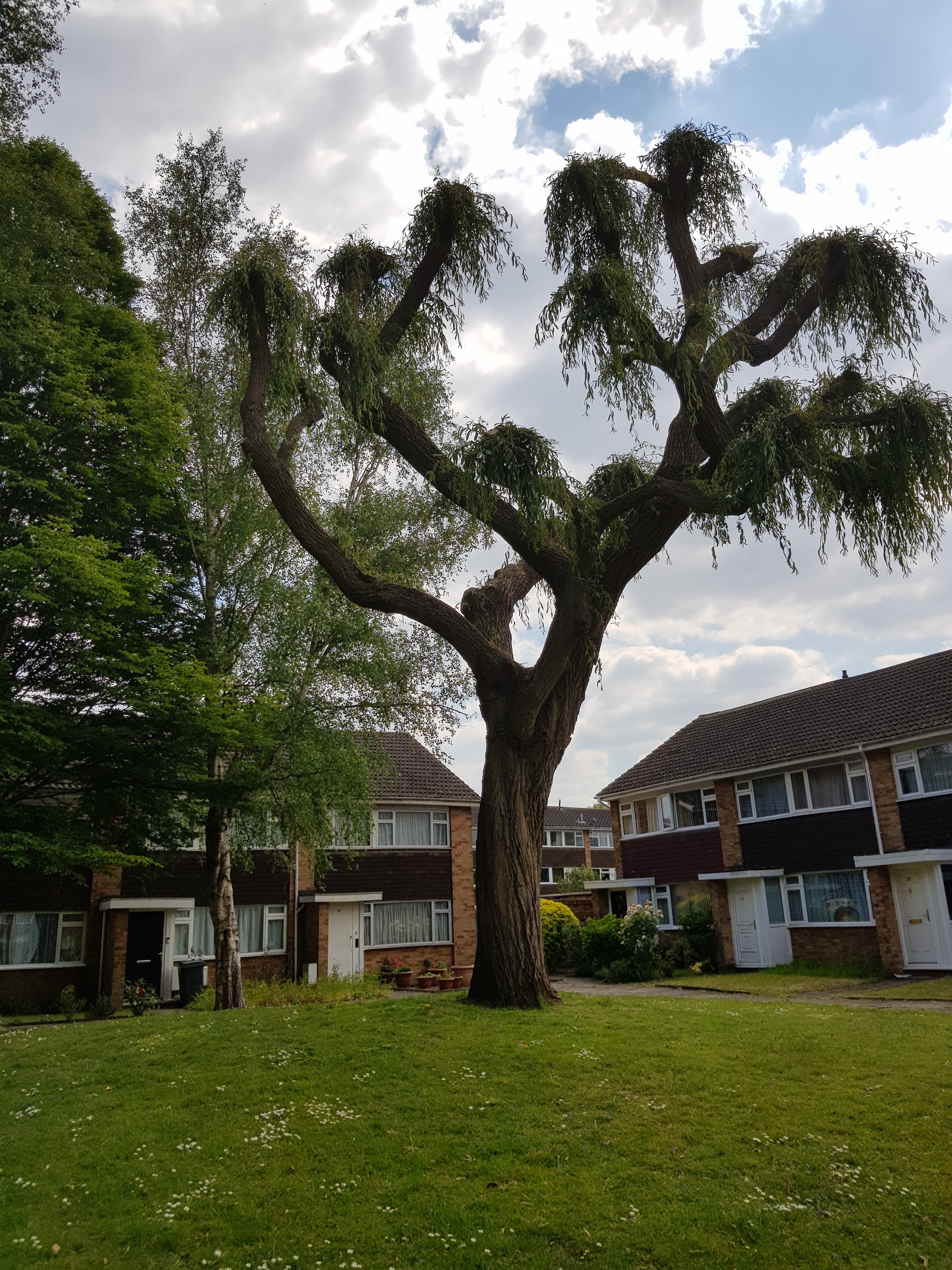 that’s for another day and maybe another blog.) There is plenty, perhaps defined in today’s terms, a ridiculous amount of green space with trees, shrubs and flowers planted. And I can’t wait to ‘do’ a TreeTalk walk around here even if lockdown gets lifted tomorrow. (Lockdown won’t get lifted tomorrow though.) If you like, or think you’ll like, tree trails try
that’s for another day and maybe another blog.) There is plenty, perhaps defined in today’s terms, a ridiculous amount of green space with trees, shrubs and flowers planted. And I can’t wait to ‘do’ a TreeTalk walk around here even if lockdown gets lifted tomorrow. (Lockdown won’t get lifted tomorrow though.) If you like, or think you’ll like, tree trails try  away. In London, I see buses, trains and underground trains empty or sparsely passengered, rattle by all day but I’m discouraged to ride them, but I could drive, on my own, adding car journeys and pollution if I wanted, even outside rush hour. I’ve never been convinced by this ‘all in it together’ guff and daily it becomes more clear that the poorer you are (and trust me I’m very privileged) the worse lockdown is for you but probably nothing compared to the horror show you’ll have to endure on the journey out. It looks like local walking is on the agenda in London for a good while longer, so why not take more note of the trees as you wander around and then lobby your council to plant more and better ones.
away. In London, I see buses, trains and underground trains empty or sparsely passengered, rattle by all day but I’m discouraged to ride them, but I could drive, on my own, adding car journeys and pollution if I wanted, even outside rush hour. I’ve never been convinced by this ‘all in it together’ guff and daily it becomes more clear that the poorer you are (and trust me I’m very privileged) the worse lockdown is for you but probably nothing compared to the horror show you’ll have to endure on the journey out. It looks like local walking is on the agenda in London for a good while longer, so why not take more note of the trees as you wander around and then lobby your council to plant more and better ones.

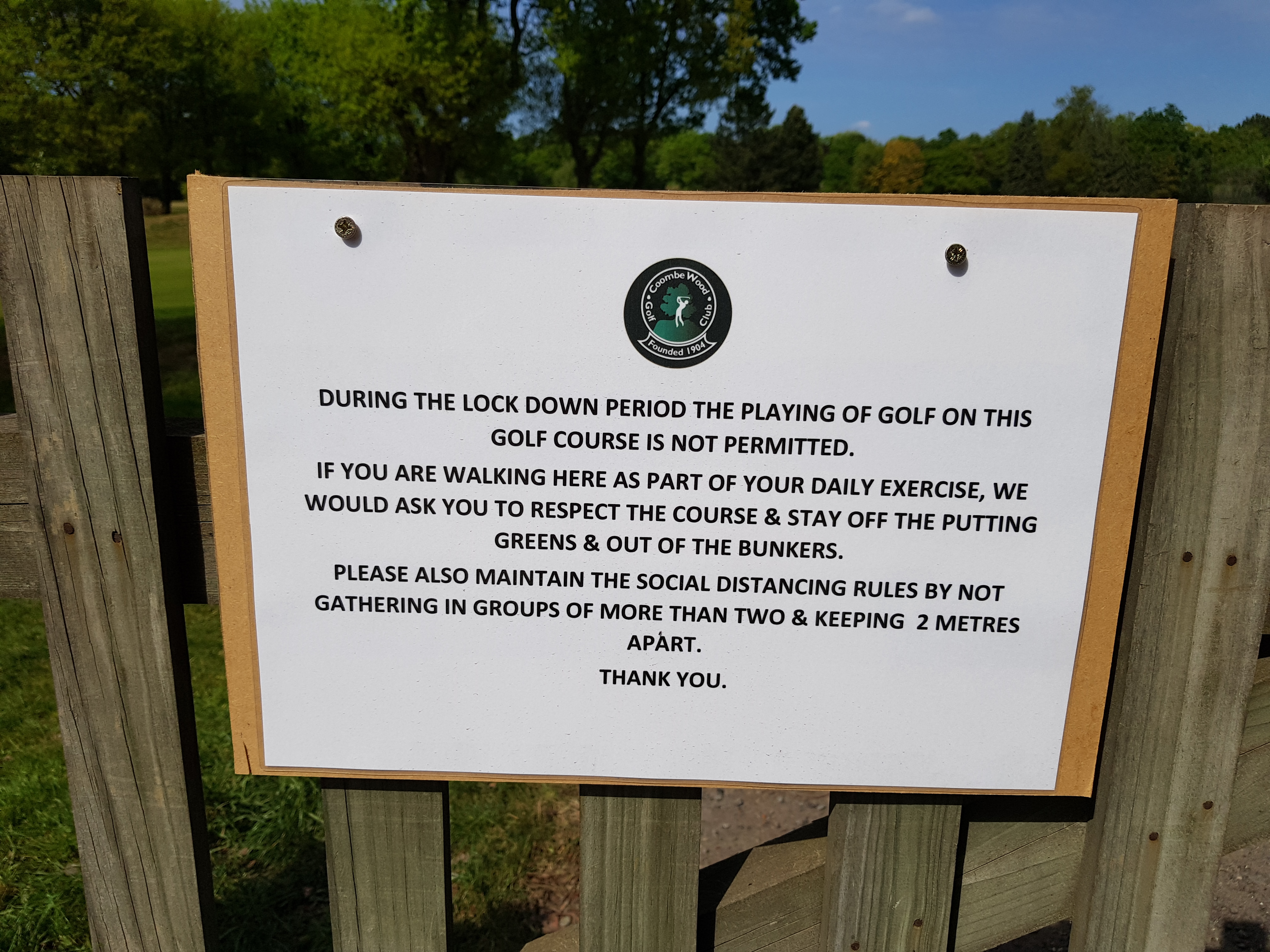 easier for them to maintain a private property, no trespassers stance, which they are entitled to do. Or they could have allowed partial access, which physically because of the layout of the course they would have been able to do. Or they could have turned a blind eye to the odd dog walker or member strolling around at different times and challenged others as they chose. Instead they elected to open up the whole course to local walkers and advertise the fact, albeit locally, with plenty of unambiguous signs round the edge of the course. And the day we visited it was very well used, with all the folk we saw able to maintain social distance with no problem, strolling about and treating the course with respect. We also got to see
easier for them to maintain a private property, no trespassers stance, which they are entitled to do. Or they could have allowed partial access, which physically because of the layout of the course they would have been able to do. Or they could have turned a blind eye to the odd dog walker or member strolling around at different times and challenged others as they chose. Instead they elected to open up the whole course to local walkers and advertise the fact, albeit locally, with plenty of unambiguous signs round the edge of the course. And the day we visited it was very well used, with all the folk we saw able to maintain social distance with no problem, strolling about and treating the course with respect. We also got to see 


 London’s public transport capacity potentially running at a fifth of pre-crisis levels, up to eight million journeys a day will need to be made by other means. If people switch only a fraction of these journeys to cars, London will grind to a halt,” Who could disagree with that? The Mayor of London, Sadiq Khan and TfL have unveiled their London
London’s public transport capacity potentially running at a fifth of pre-crisis levels, up to eight million journeys a day will need to be made by other means. If people switch only a fraction of these journeys to cars, London will grind to a halt,” Who could disagree with that? The Mayor of London, Sadiq Khan and TfL have unveiled their London 
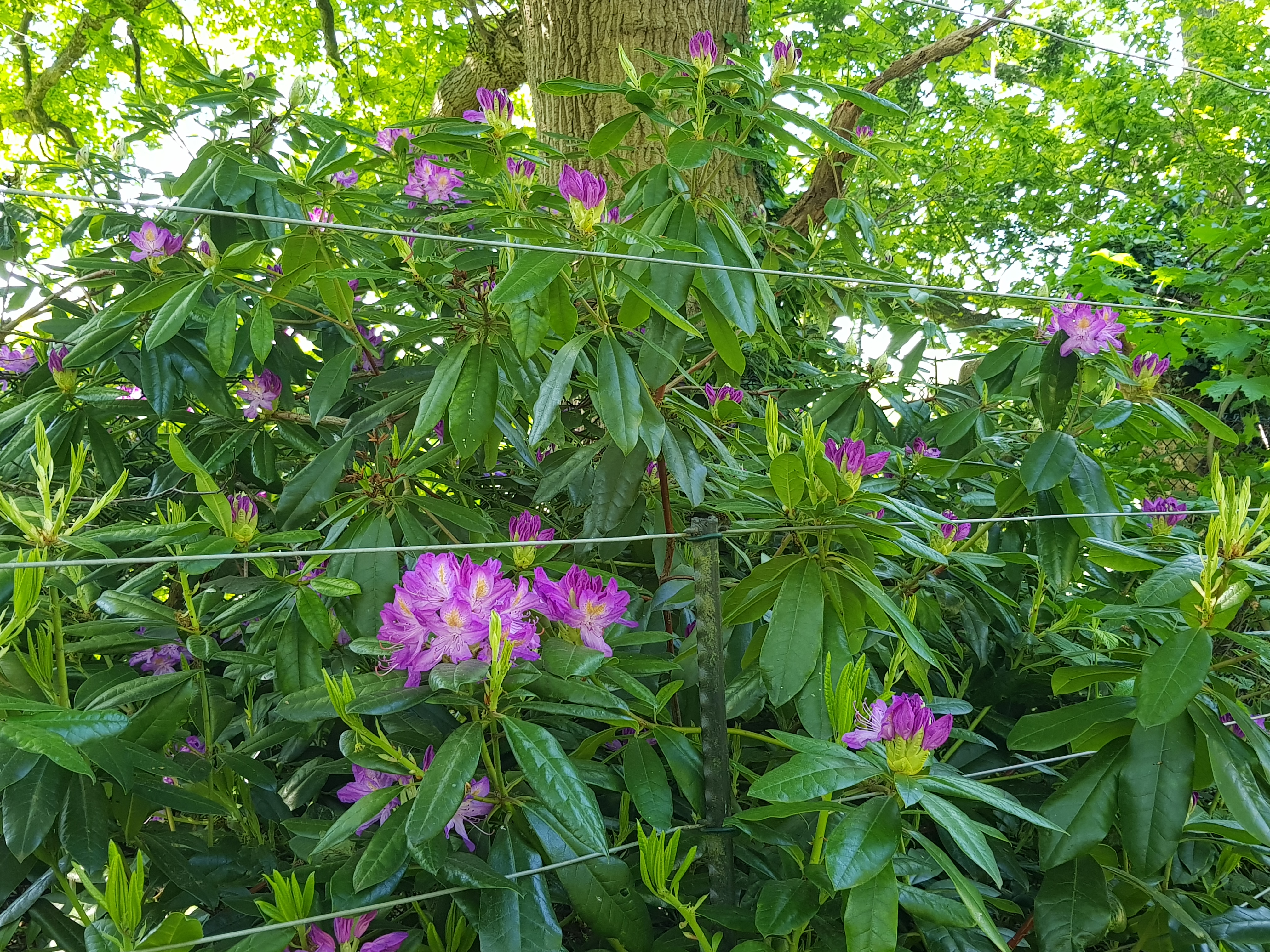 worker cyclists are allowed right now) Richmond Park. The route I use for this walk isn’t really affected by roads but the lack of traffic noise not only allows you to hear birdsong but also woodpeckers drumming away in the trees. There’s an overall quality of feel that the park is getting back to what it was originally intended for – people strolling around admiring the flora, like the rhododendrons and fauna, like the deer.
worker cyclists are allowed right now) Richmond Park. The route I use for this walk isn’t really affected by roads but the lack of traffic noise not only allows you to hear birdsong but also woodpeckers drumming away in the trees. There’s an overall quality of feel that the park is getting back to what it was originally intended for – people strolling around admiring the flora, like the rhododendrons and fauna, like the deer.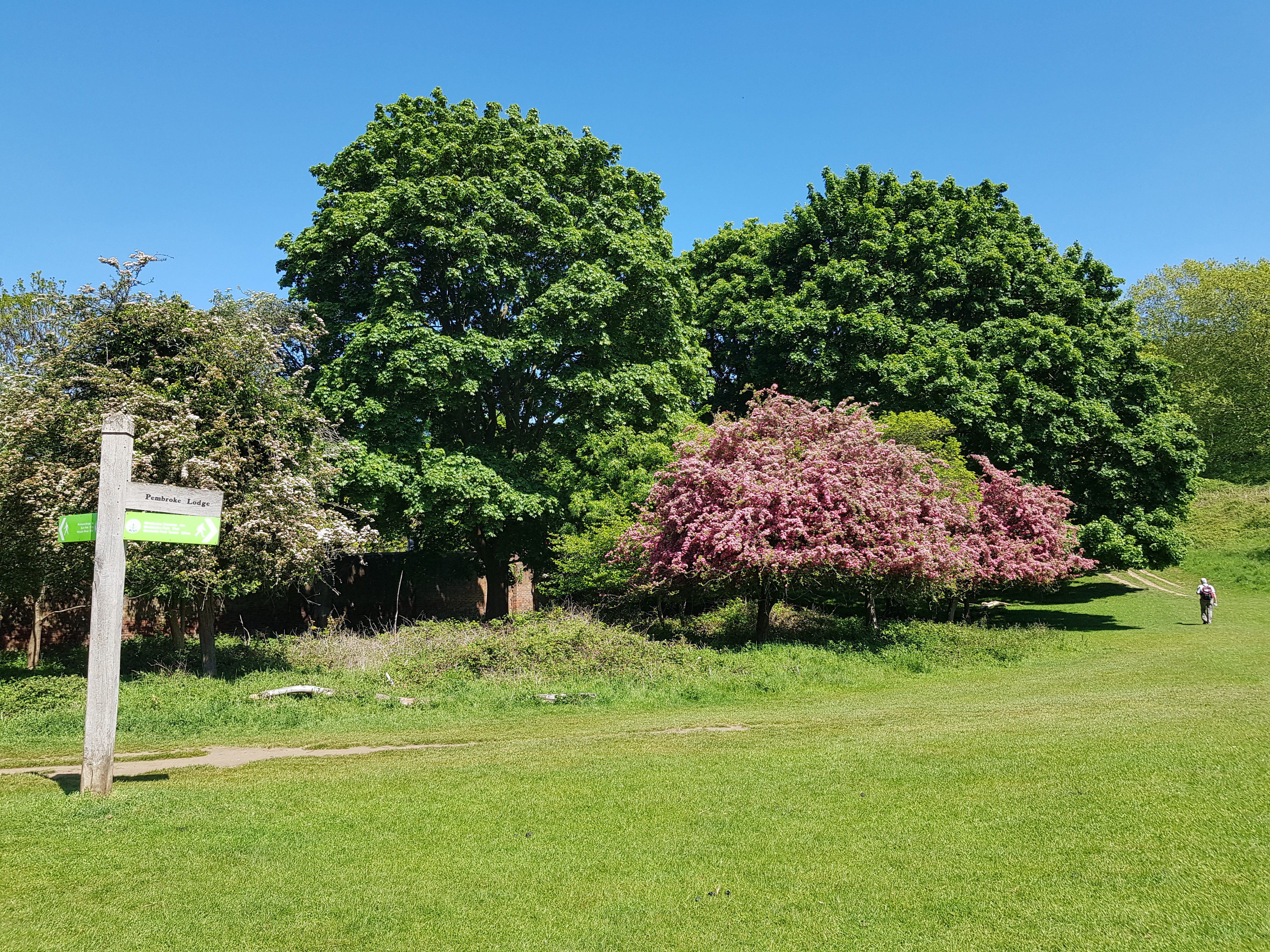

 book in the upcoming
book in the upcoming 